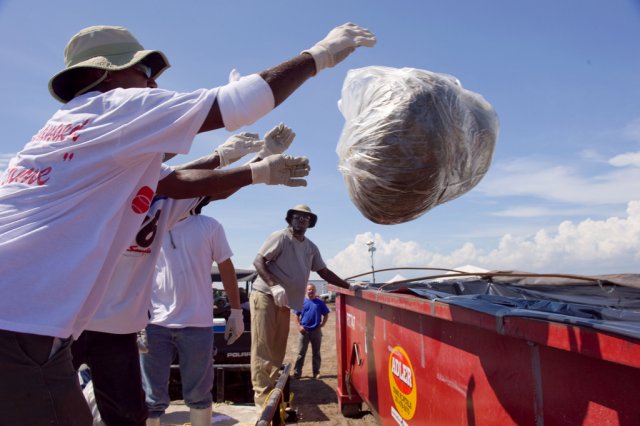EJ 2020 Implementation
On this page:
Stakeholder Engagement

In EJ 2020, EPA will also enhance opportunities for community engagement, including community involvement in EPA rulemaking and permitting processes, community-based participatory research and citizen science, and the development of outcome measures that are meaningful to communities. In addition, EPA anticipates working closely with federal, state, tribal and local government partners, communities, and other stakeholders in our second phase efforts of Goal III to demonstrate progress on significant environmental justice challenges.
To learn more about the environmental justice efforts within the EPA and in collaboration with stakeholders and partners outside of the Agency, please visit and sign up for alerts at the bottom of our Environmental Justice in Action blog.
Building Partnerships
Working with partners to expand our positive impact within overburdened communities is the second major goal of EJ 2020. EPA will work with state, tribal and other co-regulatory partners to improve the health and environment of the nation’s most overburdened communities. Through mutual learning, EPA will work with states to develop an agreed-upon:
- set of tools
- approaches
- best practices
- shared expectations
to collaboratively advance environmental justice efforts. EPA will also work with tribes, consistent with its 1984 Indian Policy, to enhance tribal capacity, coordination and action to address environmental justice concerns in areas of interest to tribes and indigenous peoples. In addition, EPA will work with business, industry, community groups and other partners to help make a more visible difference in communities.
Best Practices
With a significant history of working closely with communities, EPA has learned many lessons on how to carry out our mission of protecting health and the environment. In EJ 2020, EPA seeks to apply this expertise and knowledge from all parts of the Agency to build healthier, more prosperous and sustainable places to live, work and play. To advance these efforts to a new level, we will also work with our state, tribal and other co-regulatory partners to jointly implement a set of best practices to improve the health and environment of the nation’s most overburdened communities by 2020.
Measures
Since EPA recognizes the need for a more systematic approach to reducing environmental and health disparities, demonstrating progress on significant national environmental justice challenges is the third major goal of EJ 2020. To address complex and continuing national environmental and health problems, EPA will take a two-phased approach.
In the first phase, EPA will work closely with our state, tribal and other co-regulatory partners with authority towards achieving progress in four key areas:
- lead
- drinking water
- air quality
- hazardous waste sites
In the second phase, EPA will evaluate progress on achieving our current goals, enhance measures as appropriate, and explore potential development of additional national environmental justice measures and associated strategies.
Reporting
To increase transparency and accountability with stakeholders, EPA will report updates and program-specific actions through our website and provide regular newsletters discussing implementation. EPA will issue annual public progress reports on the implementation of EJ 2020 that demonstrate progress to communities and collaborations with our partners. The annual progress reports will provide information from each of the EJ 2020 priority areas and will be coordinated by the Office of Environmental Justice.
